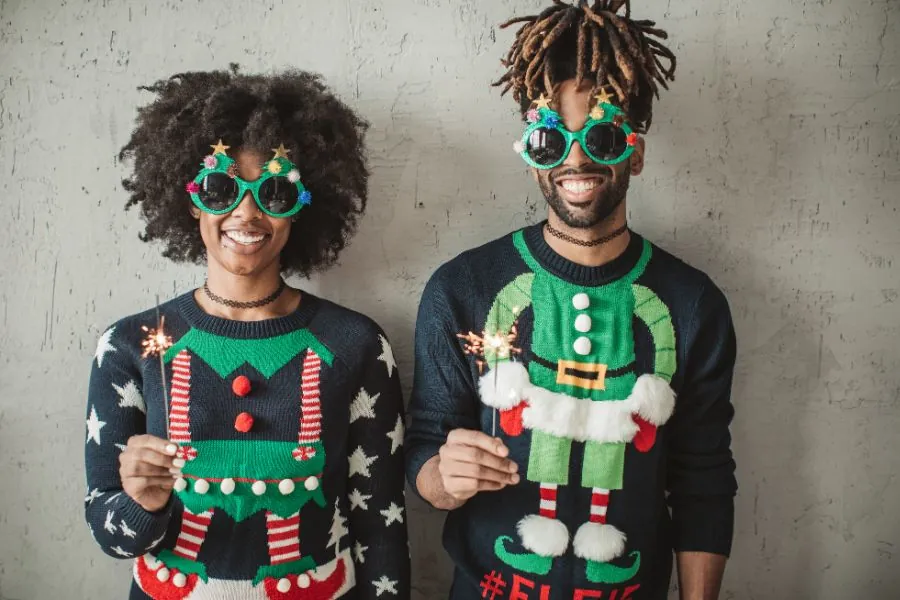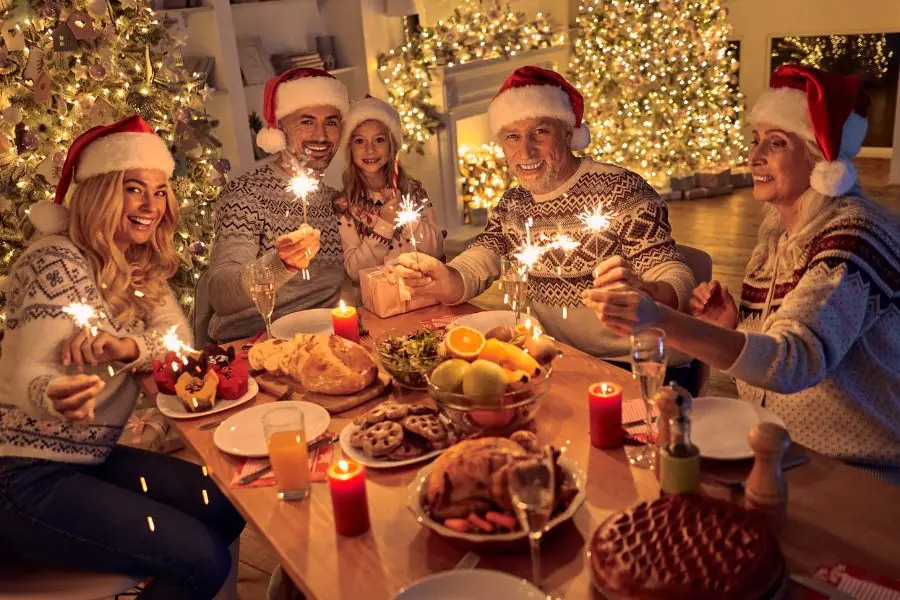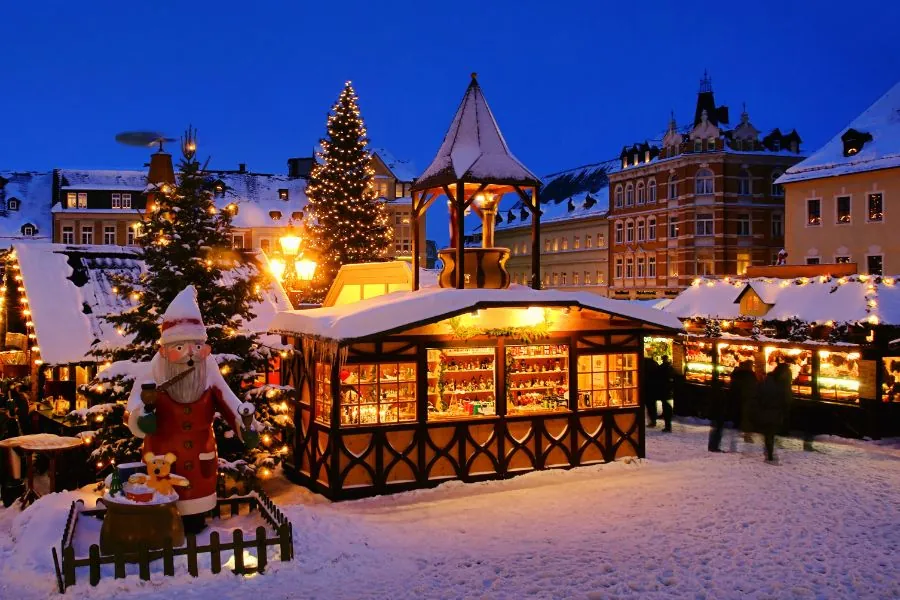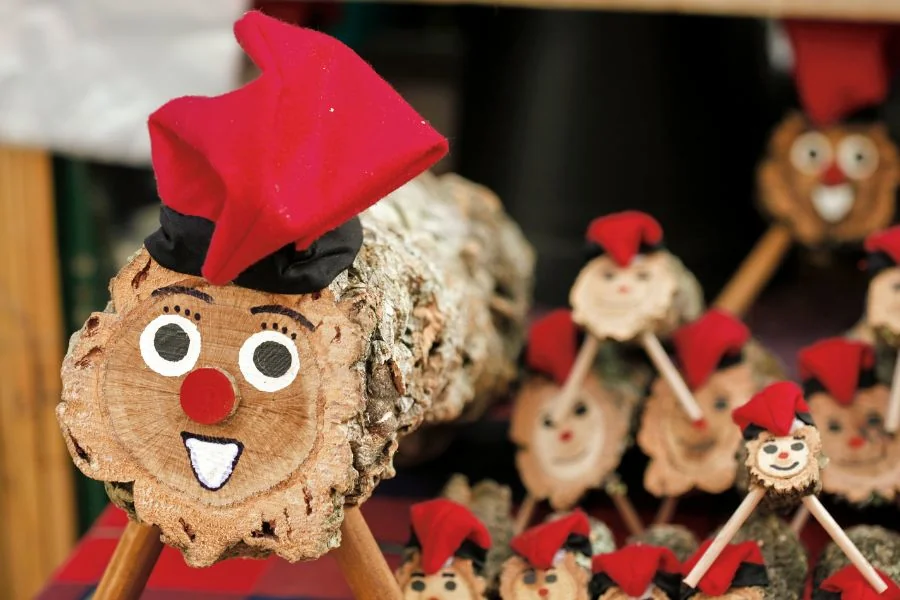Festive & Quirky Christmas traditions worldwide
A journey through festive customs around the globe
Advent is a magical time of year. This is because many people around the world celebrate their very own traditions and customs. Every country, every region and every family has its own unique way of honouring and celebrating the days leading up to Christmas. In this blog article, we take you on a fascinating journey around the globe! Together we will explore different Christmas traditions around the world. Starting with Christmas traditions that we are probably all familiar with, to others where we can only roll our eyes or laugh out loud.

Christmas traditions as we know them
Christmas tree
The Christmas tree is undoubtedly a central part of the Christmas period. The custom of putting up a Christmas tree in the house at Christmas time originated in Germany. Decorating it with lights, ornaments and small gifts quickly spread around the world. The choice of tree, the communal decorating and the festive glow it brings to any room create a warm atmosphere and symbolise the start of the festive season.
Advent calendar
Advent calendars are another popular Christmas tradition that is part of the festive season. The calendars contain 24 little doors or bags that are opened every day in December until Christmas Eve. Behind each door are little surprises, sweets or gifts to sweeten the countdown to the big celebration.
Christmas markets
Christmas markets are a festive tradition that is particularly widespread in Europe. These markets offer a variety of handmade gifts and decorations. In addition, visitors can enjoy a wide range of culinary delights. Mulled wine, traditional sweets and savoury treats are an integral part of these markets, which become a festive attraction in many cities.
Christmas lights
Festive lighting in cities plays a crucial role in creating a magical atmosphere. Consider the twinkling lights in the heart of London. Or the colourful decorations in Times Square in New York City. Christmas lights spread a glow that lights up people’s hearts and creates a joyful atmosphere.
Christmas biscuits
Baking Christmas biscuits is a delicious Christmas tradition that brings families and friends together. Some look forward to the classic cinnamon stars and gingerbread every year. Children in particular love the colourfully decorated biscuits in the shape of stars, Christmas trees and bells. These are often lovingly crafted individually with little hands. Baking and decorating together is sometimes even passed down from generation to generation and creates memories that last a lifetime.
Decorating houses
Decorating houses and gardens with lights and festive decorations is another typical custom. Entire streets are transformed into illuminated wonderlands and competitions for the most impressive lighting are widespread. This tradition not only creates a festive environment, but also brings the community together. Everyone is amazed when people transform their homes into a winter wonderland for all to see.
Unusual & Quirky Christmas traditions around the world
In addition to well-known Christmas traditions, some funny and quirky customs have developed over the years in different parts of the world. Here are 10 interesting ideas to make you smile or even add to your Christmas plans!
1. Elf on the Shelf
Scandinavia
In Scandinavian countries, there is the idea of small, friendly house spirits who are supposed to help people at Christmas time and bring good luck. This tradition has developed into a popular and charming tradition for children in particular in recent years. Through social media it is now also known beyond the borders of Scandinavia and is more widely known as “Elf on the Shelf”. The idea behind this tradition is that a little elf is placed in the children’s house. As he serves Father Christmas, he observes the children’s behaviour in order to report back to him. These lovingly crafted elves appear in various hiding places around the house during Advent, giving the children a joyful anticipation of Christmas.
2. St Nicholas and Krampus
Germany and Austria
The origin of this tradition lies in the life of St Nicholas of Myra, a bishop who lived in the 4th century. St Nicholas was known for his generosity and love for children, which laid the foundation for today’s image of the kind St Nicholas. In many European countries, including Germany, the Netherlands and Austria, St Nicholas is celebrated on 6 December. Children put their cleaned boots outside the door the night before. In the morning, they find them filled with sweets, nuts and small gifts. St Nicholas is often accompanied by his helper, the “Knecht Ruprecht” or “Krampus”. He is depicted as a demonic creature or horned devil who has the task of punishing naughty children. In many towns and villages, people organise Krampus runs, where people in scary costumes parade through the streets and keep the tradition alive.
3. Ugly Christmas Sweaters
USA and UK
The tradition of “Ugly Christmas Sweaters” has achieved cult status in recent years and is now popular in many countries. In the USA, Canada and the UK in particular, “Ugly Christmas Sweater” parties have become a popular social event in the run-up to Christmas. People gather to show off their most garish and amusing Christmas jumpers. The focus is often on creativity and bizarreness. The idea is to present the most exaggerated Christmas motifs possible. From dancing reindeer and glittering Christmas trees to borderline humorous motifs, you can see almost anything. This Christmas tradition shows that Christmas is not only a time of festive splendour, but also a time of laughter and light-hearted joy.
4. Jólakötturinn
Iceland
The Jólakötturinn, or “Christmas cat”, is an unusual Christmas tradition in Iceland. It supposedly appears on Christmas night to test the fashion of Icelanders. Those who are fashionable enough will not end up as his festive snack selection. People who wear old clothes for Christmas, however, are rumoured to be devoured by this Christmas cat. To avoid this fate, it is customary in Iceland to wear new clothes at Christmas. Thus, the Jólakötturinn serves as a cultural element that emphasises the importance of gifts and caring for one another during the Christmas season.

5. Loksa-Pudding
Slovakia
Pudding is a popular dessert at Christmas, but in Slovakia, this dessert serves a completely different Christmas tradition. The so-called Loksa pudding concludes the Christmas meal. At the end of the meal, the eldest male member of the family takes a spoon and throws it onto the ceiling. It is said that the more pudding that sticks to the ceiling, the more luck and prosperity the family will have in the new year. And so every year, many families in Slovakia hope that Grandpa will take a good aim to place as much of the delicious dessert as possible on the ceiling.
6. Hiding brooms
Norway
Tradition in Norway says that on Christmas night, witches and evil spirits fly on their broomsticks and try to sabotage Christmas. To deter them and prevent them from doing so, the Norwegians have thought of something – people hide their brooms and mops during the festive season. Superstition or not, the positive side effect is that the house is cleaned before Christmas. The festive period itself is then guaranteed to be used for more enjoyable activities.
7. KFC chicken
Japan
What do you serve on Christmas Eve? Whether it’s a festive roast or a yummy pie – there are many options to choose from. In Japan, nobody needs to argue about this because the traditional Christmas dinner is already set: hardly anyone cooks at home because the Japanese go to a KFC restaurant for a chicken dinner at Christmas. The fast food provider is delighted and has even adapted its range to meet demand with special festive menus.

8. Papa Noel in his helicopter
Brazil
Rio de Janeiro, Brazil, is home to a spectacular Christmas tradition. This is because the Brazilian Father Christmas, also known as Papa Noel, delivers presents in a particularly exciting way. Instead of the traditional reindeer sleigh, Papa Noel chooses a modern method to spark the children’s joy. He uses a helicopter to hover over the bright lights of the famous Maracanã Stadium, one of the largest football stadiums in the world. This unconventional approach adds a unique touch to the festive season in Rio and leaves the children wide-eyed as they watch the sky above the Maracanã when Papa Noel drops his magical gifts.
9. Inline skating to church
Venezuela
In Venezuela, Christmas mass is celebrated in a unique and sporty way that combines the festive atmosphere with a bit of adventure. Instead of traditionally travelling to church by car or on foot, many people in Venezuela choose to inline skate. The pleasantly warm climate at Christmas time, the streets that are often jammed with vehicles and the cheerful and informal atmosphere of this communal activity are all reasons to keep up this wonderful Christmas tradition. The streets fill with a colourful mix of shiny roller-skaters rolling to mass in a festive mood. This unusual tradition reflects Venezuela’s vibrant and creative culture.
10. Tio de Nadal, the Christmas log
Spain
In Spain, a charming and unique Christmas tradition makes its way into the festive celebrations: the “Tio de Nadal”. It is also known as the “Caga Tió”, which literally means “pooping log”. It is a piece of wood that is often decorated with a smiling face and covered with a red blanket. The tradition is for the children to feed the Tio de Nadal with treats and small gifts in the days leading up to Christmas. On Christmas Eve or the day after, the log is then “beaten” to symbolically get the presents out. The children sing carols while tapping on the Tio de Nadal. This endearing and unique tradition adds a playful touch and emphasises the Spanish Christmas celebrations. It also highlights the cultural diversity of festive customs in different regions of the country.

Christmas traditions worldwide - when do you celebrate?
The diversity of Christmas traditions around the world reveals a rich cultural variety, ranging from quirky customs to deeply ingrained rituals. Across the globe, every country and every family celebrates in its own unique way. However, there is one thing that families all over the world will never agree on. On which date exactly do they give presents? While in some parts of the world Christmas is celebrated on 24 December, elsewhere people wait until 25 December to open up their presents.
However, the variety of traditions and celebrations around the world not only shows us the cultural diversity of humanity. It rather reminds us that the shared feeling of love, warmth and care is universal, regardless of which Christmas traditions and on which day we celebrate this magical holiday. Merry Christmas to us all!
English lessons with a trainer
Use the Christmas season to polish up your English! Our English course packages for learning English online are flexible and offer lots of practice in a short space of time. We look forward to receiving your enquiry.